SME Finance Policy Guide
SME Finance Policy Guide
SME Finance Policy Guide
Create successful ePaper yourself
Turn your PDF publications into a flip-book with our unique Google optimized e-Paper software.
G-20 <strong>SME</strong> FINANCE POLICY GUIDE<br />
71<br />
costs, given that the financing structure and related<br />
contractual arrangements and procedures for monitoring<br />
and enforcement need to be tailored to a specific<br />
situation. Moreover, many financial institutions lack<br />
sufficient knowledge about value chain financing techniques<br />
and the skills to apply them.<br />
Leasing offers the potential to reduce some of the risks<br />
of traditional loan provision for investment financing<br />
in agriculture. Leasing can provide an alternative<br />
financing solution for smallholder farmers and rural<br />
enterprises with limited collateral and credit history<br />
for the acquisition of equipment and other production<br />
assets. It helps to circumvent some of the problems<br />
related to the registration and foreclosure of collateral<br />
and can be used for financing machinery and movable<br />
assets such as vehicles and farm equipment. Since the<br />
lessor owns the equipment, repossession in case of<br />
default is more straightforward as it does not require<br />
court procedures. Leaseback enables rural entrepreneurs<br />
to access funds by selling a productive asset to<br />
the lessor, who then leases it back to the lessee. At the<br />
end of the stipulated period, the lessor sells the asset<br />
back to the lessee at a pre-determined price. The use of<br />
leasing and leaseback is greatly facilitated by a suitable<br />
legal framework stipulating the rights and obligations<br />
of both parties. However, tax regulations can make<br />
leasing less lucrative than lending. Despite the advantages<br />
of leasing in principle, few institutions offer<br />
equipment leasing and leaseback to rural customers.<br />
A further policy instrument to stimulate medium- and<br />
long-term agrifinance lending can be agricultural<br />
guarantee funds. Guarantees may provide additional<br />
comfort for financial institutions interested in testing<br />
the feasibility of lending to a new clientele, but a guarantee<br />
alone is unlikely to induce additional lending if<br />
the lenders lack such interest. International agencies<br />
can perform a valuable service by conducting evaluations<br />
to determine if and under what conditions guarantees<br />
produce the expected results and how the details<br />
of guarantee designs affect performance. It is also critical<br />
to evaluate whether they distort markets and discourage<br />
private credit market development.<br />
Index-based crop insurance shows promise in overcoming<br />
some of the risk related constraints. Indemnity<br />
payments are triggered by deviations from an independently<br />
verifiable indicator such as rainfall data<br />
measured at local weather stations, and not by on-site<br />
loss assessments. Weather-index insurance thus offers<br />
the promise of reducing the administrative, adverse<br />
selection, and moral hazard problems of traditional<br />
insurance. Different indices can be used, such as<br />
rainfall, temperature, or livestock mortality, as long<br />
as they are highly correlated with regional farm yields<br />
and are accurately and objectively measurable.<br />
However, weather index based insurance has its own<br />
operational challenges. Not all pilot programs have<br />
been successful and the scalability of the successful<br />
pilots has not yet been proven.<br />
Challenges and priorities for LDCs<br />
The challenges of providing financial services to agricultural<br />
enterprises are wide ranging, and can be more<br />
severe in LDC rural sectors. The dispersed location of<br />
rural clients, the difficulties and high costs of transportation<br />
and communication, the heterogeneity in<br />
farming activities, and the level of management skills<br />
make small farm lending a costly endeavour. The high<br />
agricultural production risks, further complicated by<br />
the sensitive political nature of agriculture and domestic<br />
food production, explain why lending to agriculture<br />
is risky. All of these challenges are present at<br />
different levels of the financial system, the policy level,<br />
the financial infrastructure level, and the level of financial<br />
institutions.<br />
Financing agricultural <strong>SME</strong>s requires both <strong>SME</strong> finance<br />
and knowledge about the agricultural sector. However,<br />
in many LDCs, financial institutions know very little<br />
about agriculture and lack the specific agricultural risk<br />
management skills, suitable products, and term liabilities<br />
to finance agricultural <strong>SME</strong>s. On the demand side,<br />
agricultural <strong>SME</strong>s frequently lack the required financial<br />
data, business plans, marketing tools, and sufficiently<br />
powerful projects to convince financial<br />
institutions to provide adequate funding.



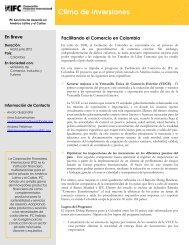
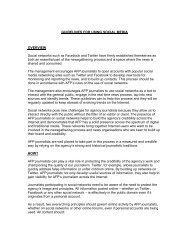
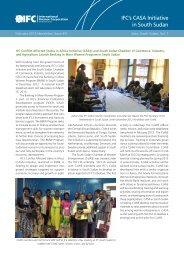

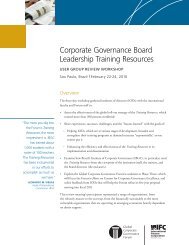
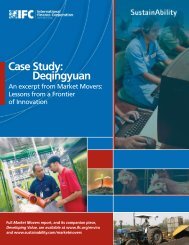

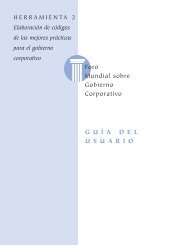
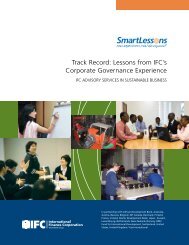
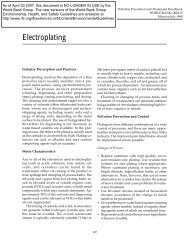
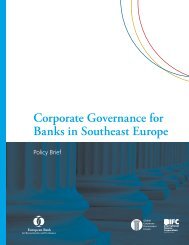
![Print a two-page fact sheet on this project [PDF] - IFC](https://img.yumpu.com/43449799/1/190x245/print-a-two-page-fact-sheet-on-this-project-pdf-ifc.jpg?quality=85)


